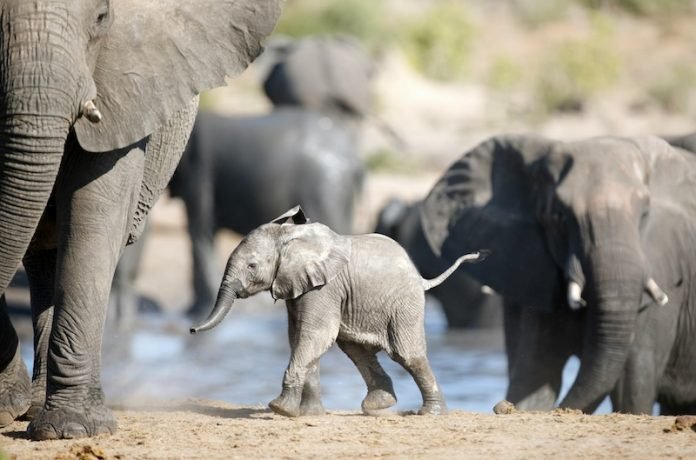
In the lush landscapes of North India’s Bengal region, researchers have uncovered heartwarming evidence of the deep emotional bonds that Asian elephants share with their young.
In 2022 and 2023, scientists observed and documented an incredible aspect of elephant behavior that closely mirrors human expressions of grief and mourning: the burial of their dead calves.
This discovery, detailed in a recent study published in the Journal of Threatened Taxa, sheds light on the complex emotional lives of these majestic creatures. The research focused on five separate instances where herds of elephants took great care in burying their deceased calves.
Witnesses to these poignant moments reported that the elephants would carefully carry the body of the calf using their trunks and legs, then gently lay it to rest in the earth, with the legs of the calf pointing skyward.
What makes these observations particularly striking is the ceremonial-like behavior that accompanies these burials.
In one heartrending scene, the herd gathered around the burial site, trumpeting and roaring loudly, a display of collective mourning that is hard to ignore.
It seems that these giant mammals, much like humans, feel the need to express their sorrow and say goodbye to their lost ones.
The researchers, Parveen Kaswan and Akashdeep Roy, noted that these burials were conducted without any direct influence from humans. The decision to bury their dead, and the method of doing so, appears to be a natural behavior among these elephants.
This observation is significant because it emphasizes the inherent empathy and intelligence of elephants, traits that humans often think are unique to our species.
Interestingly, the study revealed that only the calves, due to their smaller size, are buried in this manner.
Adult elephants, simply due to their massive size, are not transported and buried by the herd. This practical limitation highlights the elephants’ understanding of their environment and their capabilities within it.
Around each burial site, researchers found clear footprints of 15 to 20 elephants, evidence of the community’s involvement in the burial process.
The sites chosen for these burials were away from human settlements, often in irrigation canals on tea estates, indicating a preference for privacy in these solemn moments.
This behavior has been briefly observed in African elephants but remained largely unexplored among Asian elephants until now.
The study’s findings suggest that, similar to their African relatives, Asian elephants possess a complex social structure and emotional depth that drives them to care for their dead.
Following the burial, the herds would leave the site quickly, within about 40 minutes, and would not return, choosing instead to migrate via different routes.
This behavior might indicate a form of respect or a ritual of letting go, aspects of mourning that are remarkably human-like.
Asian elephants are currently listed as endangered, with an estimated 26,000 remaining in the wild, primarily in India and some parts of Southeast Asia.
They can live up to 60-70 years in the wild, forming close-knit communities that support each other through life’s challenges, including the loss of their young.
This study not only provides insight into the rich emotional lives of elephants but also highlights the importance of protecting these magnificent animals and their natural habitats.
The more we learn about their behavior and social structures, the better equipped we are to ensure their survival for generations to come.
The research findings can be found in the Journal of Threatened Taxa.
Copyright © 2024 Knowridge Science Report. All rights reserved.



